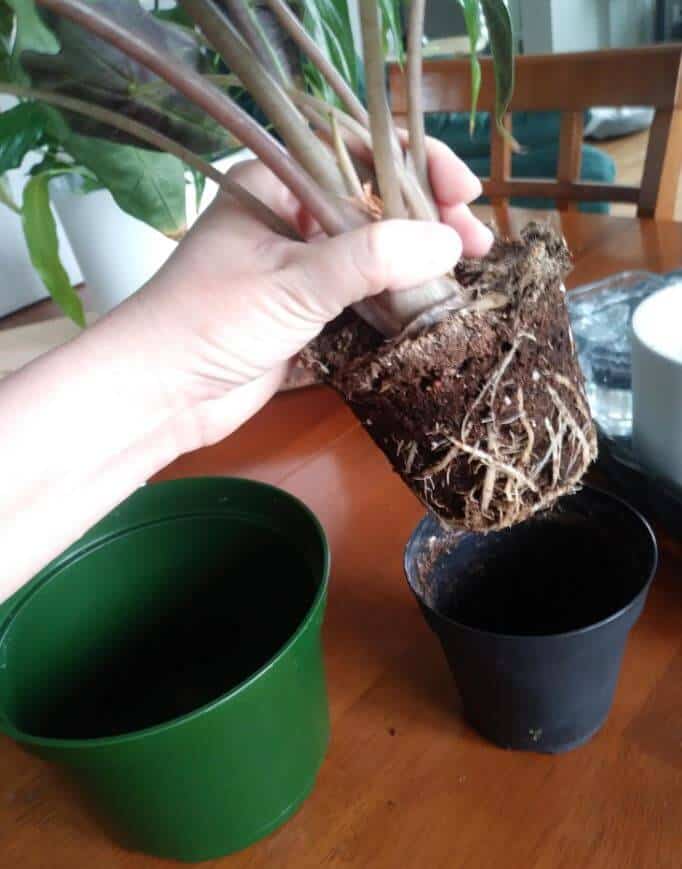Last Updated on September 3, 2023 by a Friendly Gardener
Many indoor gardeners feel that alocasia plants can be challenging to cultivate. Commonly called the ‘Elephant’s Ear’ or the ‘African Mask’ plant, alocasias are incredibly popular for their enormous and deeply veined foliage. Leaves may be arrow-shaped or heart-shaped and they grow from tuberous rhizomes under the soil surface.
Alocasias are rapid growers originating in the tropics and are an aroid species. They are understory plants that crave bright indirect light, warmth, and humidity from below rainforest tree canopies. So, for these plants to thrive, they need an environment mimicking their natural habitat. Comfortably warm temperatures and filtered light are optimal.
Do Alocasias Like to Be Root Bound?
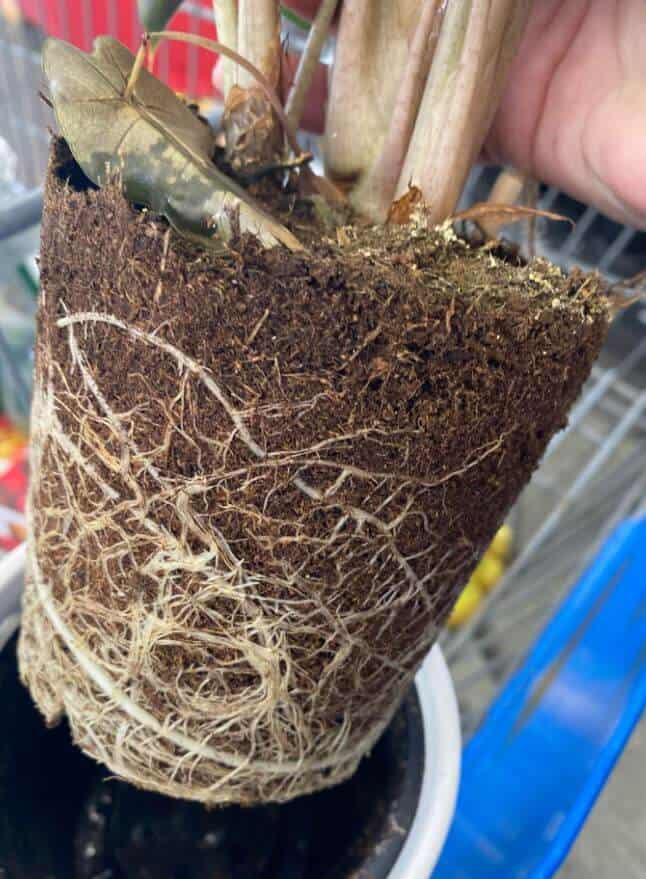
Alocasia plants enjoy being a little rootbound because this replicates life in their natural habitat. Being slightly root-bound also encourages leaf production and aids in protecting roots from fungal infections and root rot due to sitting in soggy soil. However, once your plant exhibits symptoms of overcrowding, you should move it to a container one to two sizes larger.
Not all houseplants like being root-bound and will suffer as a result. The Alocasia uses slight root bounding as a defense mechanism. When plants are cultivated in densely packed soil beds, they are at risk of sitting in soggy soil due to overwatering. These plants do not like, nor will they thrive in saturated soil. Ideally, a loose, well-draining soil is best to ward off any risk of soggy ground, but being slightly root-bound will help even more.
Channeling Energy to Foliage Growth
These members of the Araceae family will use energy for root growth, foliage, and flower production. So, if your Alocasia is allowed to become slightly root-bound, there will be little room for root system expansion. This leaves more energy for leaf production, and most of us cultivate alocasias for their showy foliage. When roots live in cramped conditions, they cannot expand, so that the plant will push out more foliage and blooms.
Natural Habitat: Confined Growing Conditions

In tropical rainforests, the Alocasia will grow as an understory plant on the rainforest floor in parts of Australia and Southeast Asia. They grow in densely packed conditions with many other types of vegetation, so there isn’t much room for root system expansion, meaning we find Alocasia root bound in the wild. You are replicating the growing conditions in its natural habitat by permitting your Alocasia to become somewhat root bound.
Do All Alocasia Species Like to Be Root Bound?
Yes, Alocasia species do enjoy being kept slightly root bound. In the wild, they will increase in crowded conditions. They prefer this to a pot that is just too big. It’s a good idea to allow your Alocasia plant to outgrow its container before repotting it in a larger one.
When Should I Repot My Alocasia?
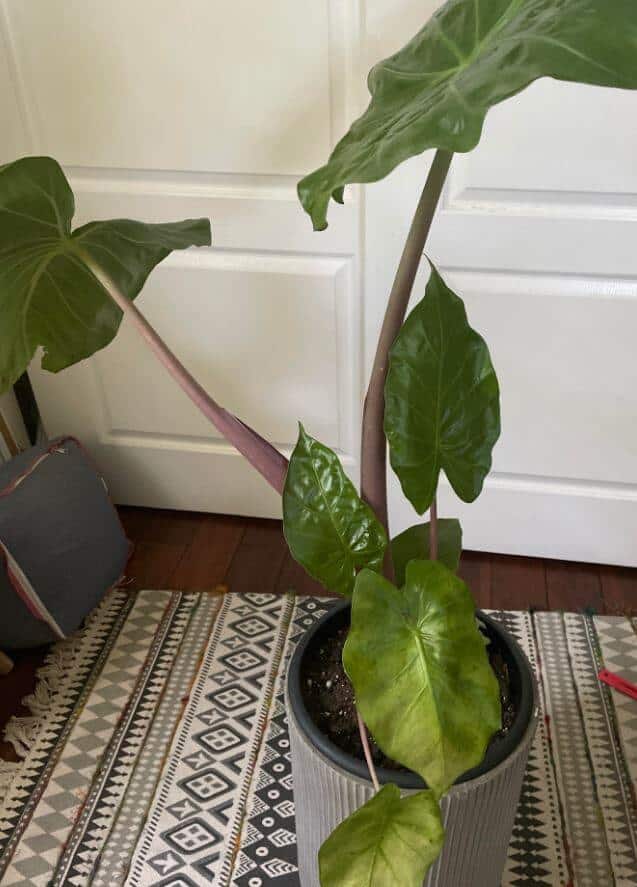
For a happy alocasia, you’ll want to wait until your plant exhibits signs of being overly root-bound. The Alocasia is a communicator, so this plant will give notice. Look for these signs:
-
Watering problems
Wilting in between waterings may indicate there is insufficient water retention. Also, pay attention if water runs immediately out of the drainage holes when you water. This might suggest that there are primarily roots and little soil. Root-bound plants are more at risk for dehydration. With overcrowded roots, they cannot absorb sufficient amounts of water.
-
Appearance of Roots
If your alocasia plant sends roots up through the soil surface or roots begin peering from drainage holes, you need a larger container.
-
Stunted or interrupted growth
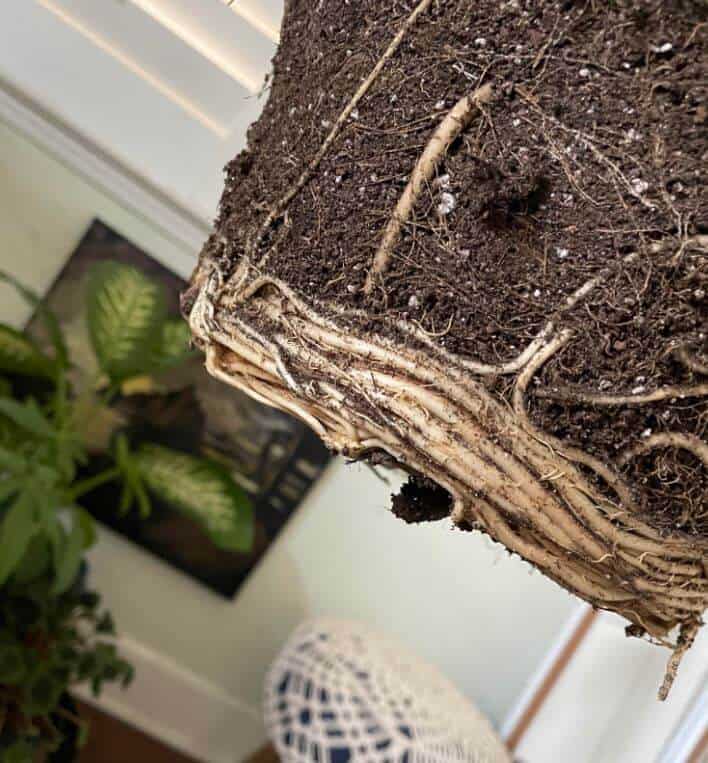
Once your plant is overly root-bound, growth will be reduced. Foliage may begin to droop or yellow because the plant can no longer absorb necessary nutrients from the soil bed. Even if you are fertilizing, the fertilizer will wash away relatively quickly if there is little to no soil.
Most container houseplants will become root-bound at some point in their lifetime, and each kind of plant will react individually to this condition. Snake Plants, peace Lilies, Boston ferns, and root bound Alocasia will respond positively by thriving, while others will suffer a crowded root system. Alocasias, like Peace Lilies, may only flower if the roots are crowded. Other plants, like the Monstera, may wilt or fall over if they do not have enough room for root systems.
Whether or not a plant can survive for long will depend on the type of plant itself. Alocasias can continue without much difficulty until their root system cracks the container. However, for a healthy, happy alocasia, it’s best to report when rogue roots emerge, there appears to be little soil, or you notice stunted growth.
You can evaluate a need for repotting by gently removing the plant from its current pot. You should repot if the root system appears alone with little potting mix.
Early stages of being root-bound are easy to remedy. The final steps can be fatal for a plant. Large roots will develop and tangle somewhat when an alocasia is in the beginning stage. Your plant will push out new leaves and flowers, investing energy in a push upward. As root systems develop more aggressively, roots may emerge from the soil surface or the drainage holes, which is an excellent time to repot.
If your plant progresses to the final stages of being root-bound, you will have difficulty removing it from its container as the roots attach firmly to the pot. Your plant will suffocate from a lack of space and cannot absorb adequate water and nutrients for survival. Often, when a plant reaches this stage, it will die.
In Conclusion
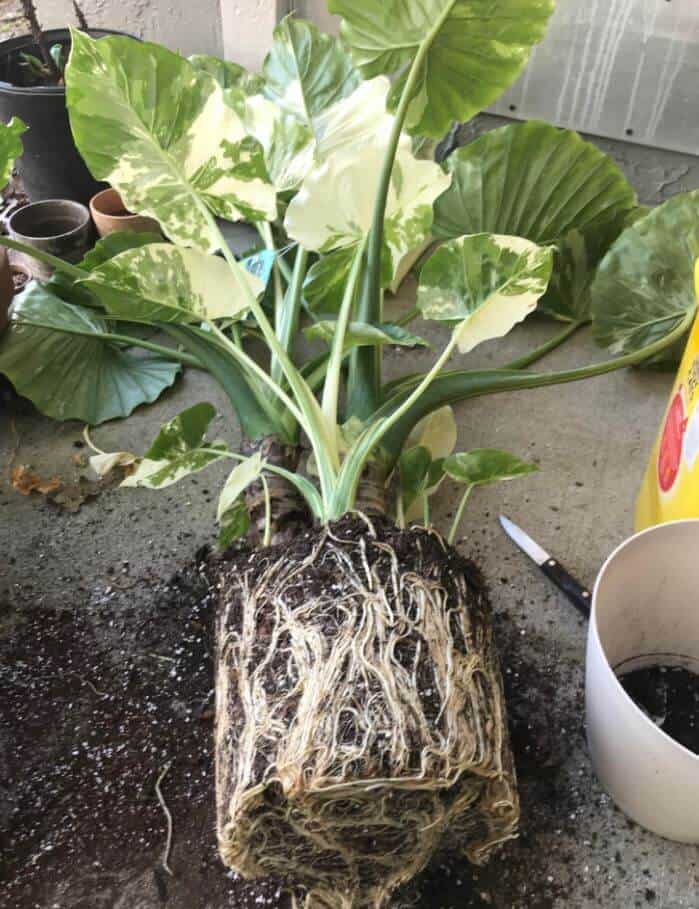
Permit your Alocasia to grow undisturbed until you notice the signs that your plant is too rooted, including:
- Roots emerging from drainage holes and the soil surface.
- Roots circling the inside of the container
- Soil displaced by roots
- little to no water retention with immediate drainage during watering.
Allow your Alocasia to become a little root bound, and then repot.

